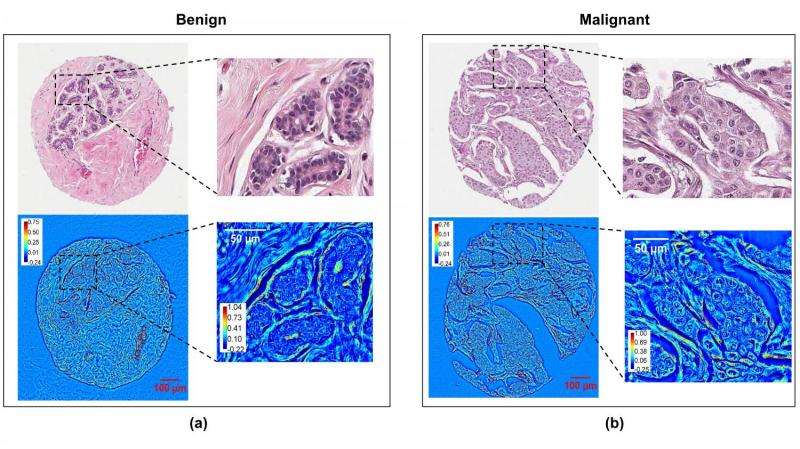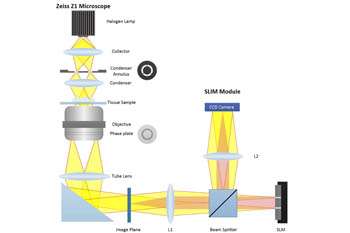New optical method promises faster, more accurate diagnosis of breast cancer

A new optical method for more quickly and accurately determining whether breast tissue lesions are cancerous is described by University of Illinois researchers in the Journal of Biomedical Optics, published by SPIE, the international society for optics and photonics.
In "Breast cancer diagnosis using spatial light interference microscopy," published 20 August, University of Illinois at Urbana-Champaign and Chicago researchers Hassaan Majeed, Mikhail Kandel, Kevin Han, Zelun Luo, Virgilia Macias, Krishnarao Tangella, Andre Balla, and Gabriel Popescu report on a quantitative method for diagnosing breast cancer using spatial light interference microscopy (SLIM).
Because this method is based on quantitative data rather than a subjective assessment, the researchers expect that these preliminary results show the potential of their technique to become the basis for an automated image analysis system that would provide a fast and accurate diagnostic method.
"Conventional methods for diagnosis of breast cancer have several limitations, including observer discrepancy," said YongKeun Park, a professor at KAIST and a guest editor of the special section on Quantitative Phase Imaging in Biomedicine in which the article appears.
When an abnormality in the breast is discovered, standard practice is for the physician to take a tissue biopsy, which is then stained to provide enough contrast for a pathologist to study key features of the tissue under a microscope. The tissue analysis is done manually. Due to variations such as staining intensity and the illumination used, the process does not lend itself to automation.

Manual inspections, however, are subject to investigator bias, and the process is time-consuming. This can, in some cases, result in late diagnosis ? a critical shortcoming given that early diagnosis significantly improves chances of survival.
Using the breast tissue biopsies of 400 different patients, researchers selected two parallel, adjacent sections from each biopsy. One was stained and the other left unstained.
The unstained samples were analyzed using a SLIM module attached to a commercial phase contrast microscope to generate interferograms ? photographic images derived from data based on how the tissue refracts light.
Four interferograms were used to produce one quantitative image showing areas with different refractive properties in different colors. The boundary between tumors and the cells around them were clearly delineated, making it possible to assess whether the tumors were malignant or benign.
More information: Journal of Biomedical Optics, DOI: 10.1117/1.JBO.20.11.111210
Journal information: Journal of Biomedical Optics
Provided by SPIE—International Society for Optics and Photonics


















